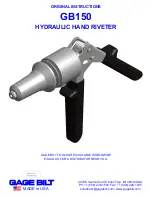
THORNTON
Leading Pure Water Analytics
200CR Conductivity/Resistivity Instrument Initial Set-Up
200CR Front Panel
The keypad has 6 keys which access specific menus
as follows:
measure
- menus to change measurement modes.
setpoint
- menus for programming setpoints.
relays
- menus for programming relays.
outputs
- menus for programming outputs.
calibrate
- menus to perform calibration.
menus
- all other menus (cell constants, security,
averaging, compensation, etc.)
The control keys which are used to make changes
within a menu are:
OK/Next
is used to accept a selection and proceed to
the next menu level.
Up arrow
is used to scroll up through a list of
options (& increase numbers).
Down arrow
is used to scroll down through a list of
options (& decrease numbers).
Left arrow
is used to move the cursor to the left
within a menu.
Right arrow
is used to move the cursor to the right
within a menu.
Each digit can be scrolled through the values:
.
(decimal point), 0, 1, 2, 3, 4, 5, 6, 7, 8 and 9. The first
digit of each number can also be set to neg.(-)
Following are the steps necessary to install a 200CR
instrument and begin operation.
1. Instrument installation - (Chapter 2)
The 200CR can be panel, pipe or wall mounted
and a sealed IP65 rear cover is optional but is
required for wall and pipe mounting. Drill holes in
the rear cover as needed for conduit or cable grips.
2. Wiring - (Chapter 2)
Make all necessary electrical connections to the
instrument. The wiring procedure is outlined on
the back of this sheet.
3. Instrument Calibration - (Chapter 8)
This instrument is factory calibrated within
specifications and does not require re-calibration. If
Quality Assurance requirements call for verification,
follow the procedures in the manual.
4. Connect sensors to patch cords.
5. IMPORTANT: Enter cell (sensor) constants for
resistance and temperature for each channel.
•
Press
menus
key then use arrow keys until:
Edit Sensor Cal
•
Press
OK/NEXT
key
A Cell
M=.10000_
•
Select
(
A Cell, A Temp, B Cell, B Temp
)
using up and down arrow keys
•
Shift cursor using the right arrow key to enter
M
, the multiplier.
•
Shift cursor using the right arrow key to enter
the precise value of the cell constant found on
the sensor.
•
Shift cursor back to the first field and repeat
the above procedure for each of the other three
constants.
•
Press the
OK/NEXT
key
Save Changes?
Yes
•
Press the
OK/NEXT
key
6. Select desired measurements for each sensor
•
Press
measure
key
Channel Primary (A,B) settings:
For resistivity, ohm-cm (Auto) - recommended.
For conductivity, S/cm (Auto) - recommended.
By selecting Auto, the instrument will automatically
scale the sensor value to be read by the
instrument.
Channel Secondary (a,b) settings:
Secondaries are usually temperatures (
°
F,
°
C)
•
Press the
OK/NEXT
key once all 4 measurement
selections are made.
Save Changes?
Yes
•
Press the
OK/NEXT
key to save changes.
7. Program the analog outputs. (Chapter 7). Do not
calibrate analog outputs.
For additional information refer to Manual 84295. For
coverage of digital RS232/RS422 communications
refer to Manual 84364.




















